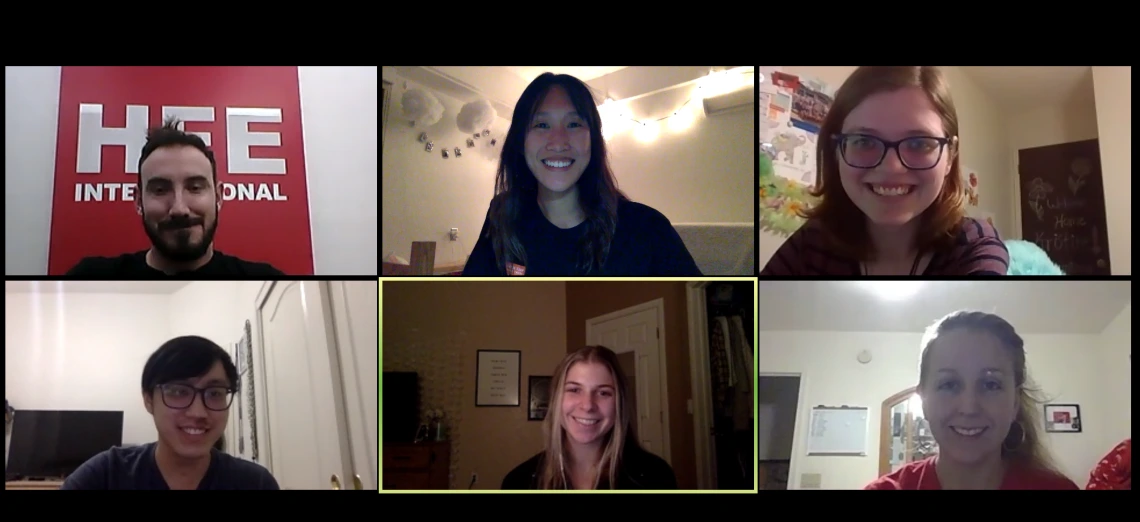Mentors Share Updates on Capstone, COVID-19 Style
Though instruction has gone virtual and students have limited access to makerspaces, program mentors share how they and their students are making it work.

Students meeting via Zoom to work on their capstone projects.
Just like the rest of 2020, the fall semester of Interdisciplinary Capstone looks different than originally expected. Students are facing their fair share of struggles: difficulty in prototyping designs, limited capacity in campus makerspaces, and geographic distances that make it difficult or impossible to physically gather in groups.
However, the program is proceeding on a normal timeline, and students are meeting their milestones as in any other year. Program mentors, who teach virtual classes twice a week, have reported that the students are rising to the challenge and working to develop their projects despite unexpected constraints.
In most classes, mentors are seeing increased attendance compared to in-person classes, because students can log in from wherever they are in the world. One student attends from Jordan, even though that means class starts at 1 a.m. for her.
“The teams (and sponsors) have found innovative ways to work in this environment,” said mentor Claude Merrill. “I have one team that had a 3D printer delivered to a team member’s apartment. The rest of the team feeds him drawings, and he prints the parts.”
Team 21011 is designing a robotic arm to automate the loading and unloading of golf shafts into a sand blaster for sponsor PING. The students coordinated with the machine shop in the university’s Aerospace and Mechanical Engineering building and reserved regular timeslots to work on the project.
Team 21056 is developing a robotic system to inspect and measure the speed of turbines for Tucson Electric Power. Since they don’t have their own wind turbine to test, they began testing the computer vision algorithm by having a team member move a blue Post-It note in a circle.
“The students have been very resilient and innovative, including with their prototyping,” said mentor Steve Larimore. “The students are doing a great job of designing their products.”
The virtual format has allowed for other opportunities as well. For example, the engineering review panel is usually composed of local industry representatives who evaluate projects in person, but this year has allowed for remote panel guests, like an engineer from Washington state.
“The Zoom tools have been great for getting instant grading feedback from the panel and the students,” said mentor Gary Redford. “I can give them the review results in a shorter time.”
With all the lessons learned since campus first shut down in spring 2020, the Interdisciplinary Capstone team members are well-prepared as they look ahead to spring 2021.
“We have already identified the spaces in which teams will build and test their prototypes and developed schedules that will allow them to adhere to university restrictions,” said Interdisciplinary Capstone director Ara Arabyan. “We are currently working with university administration to implement a PCR testing protocol for the use of these spaces, should such testing be a requirement for all fabrication spaces.”
There are some changes brought about by the pandemic that will have a lasting positive impact on the program. For example, when Craig M. Berge Design Day 2020 went virtual, students made video presentations of their projects rather than presenting them to the public at a live event. They were so impressive that this year students will be making video presentations again, whether Design Day is virtual or in-person. The team is currently planning for another virtual iteration of the event.
“While we do hope that we will be able to be back on campus next semester, there is no doubt in my mind that our students will find a way to meet all of the project milestones and deliver high quality products to their sponsors by Design Day 2021,” said mentor Sharon ONeal.

